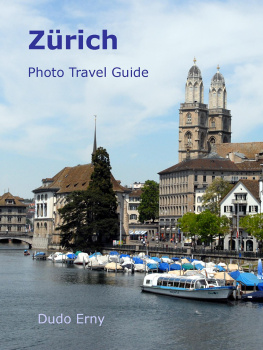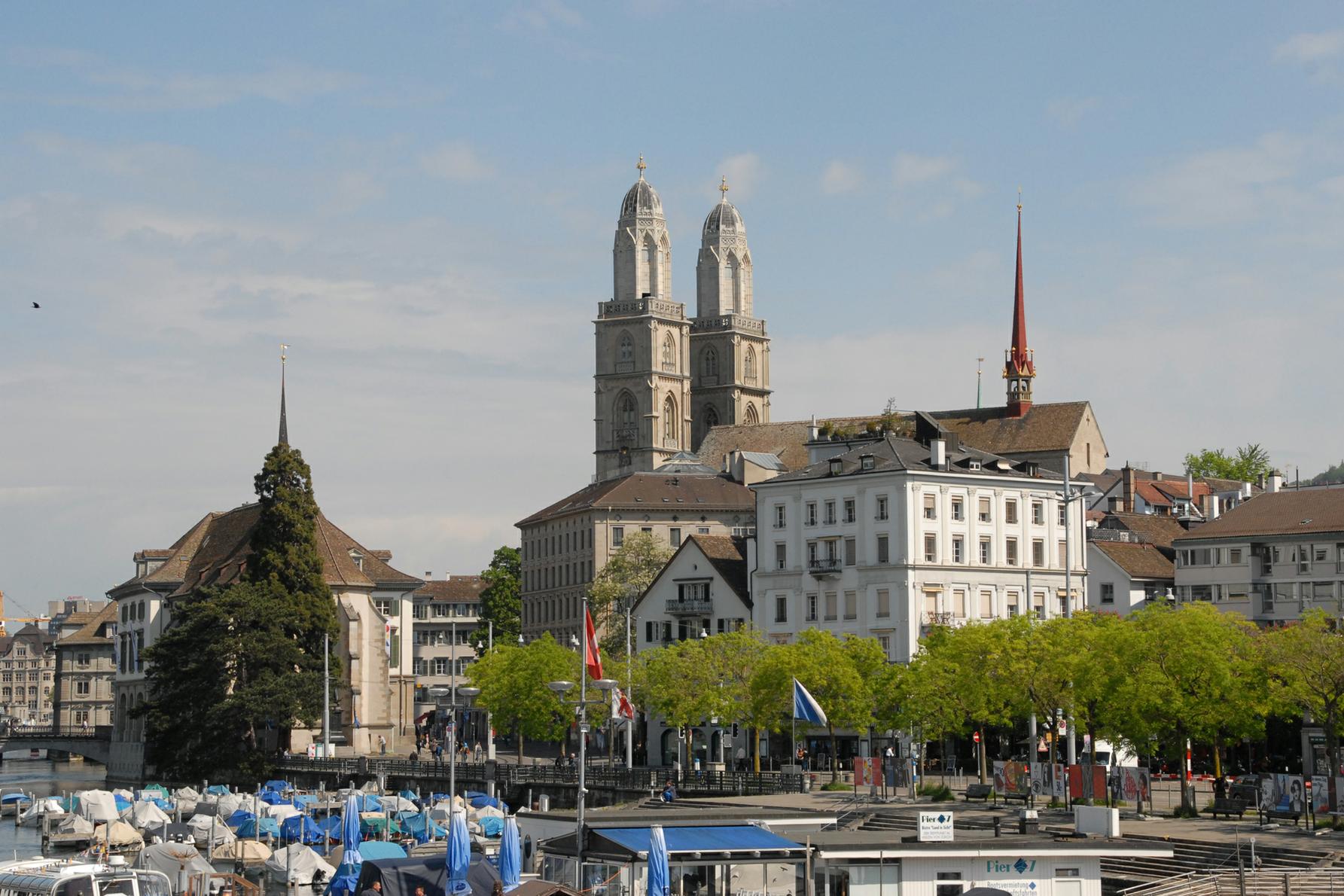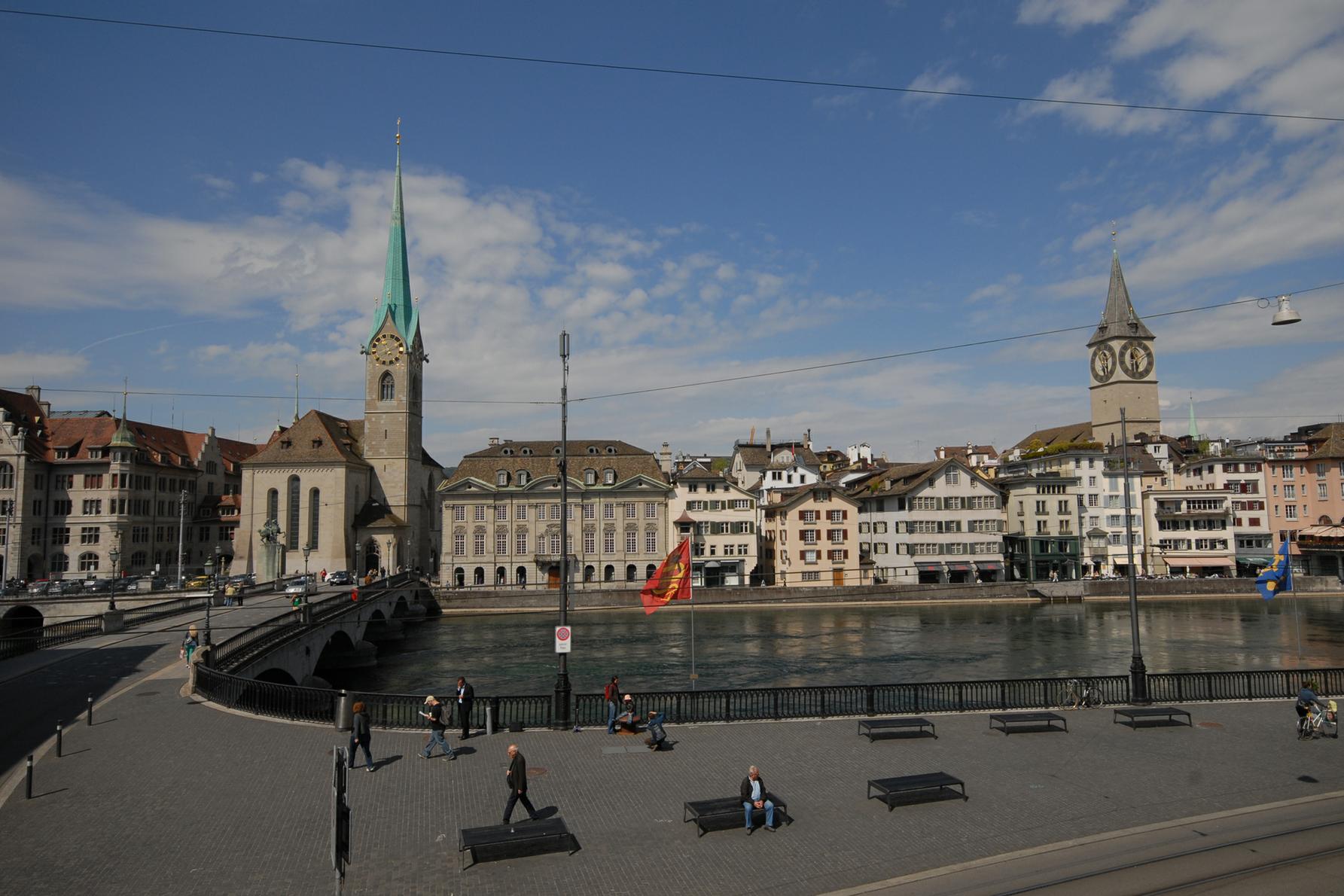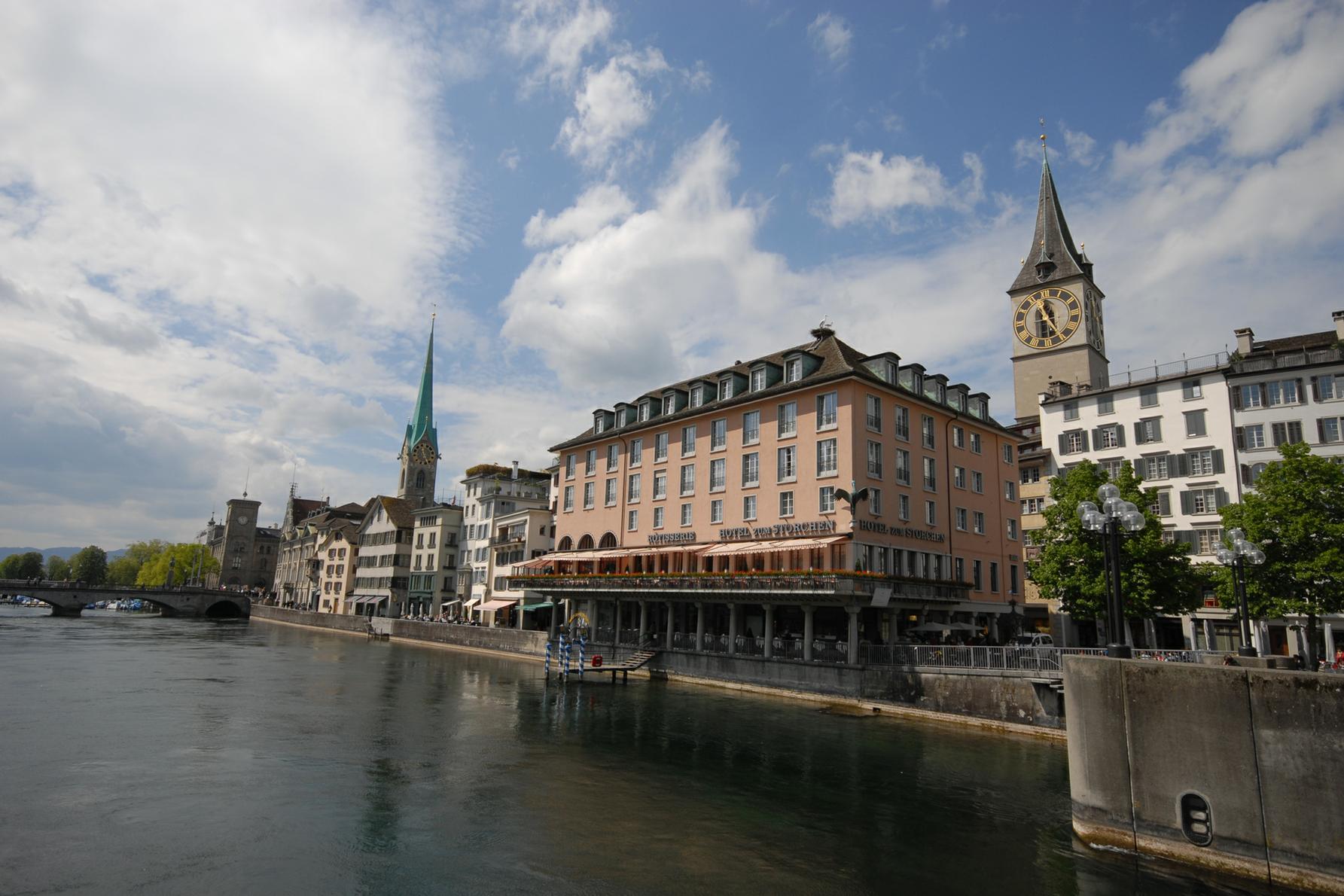Zrich: Photo Travel Guide
Preface
Zrich is an important economic and cultural centre, and home to400,000 people. The largest city in Switzerland has an attractiveposition alongside the north of Lake Zrich, and on both shores ofthe River Limmat that flows out of the lake in a north-westerlydirection. This is a student city, with both Zrich University, thebiggest in Switzerland, and ETH, the Swiss Federal Institute ofTechnology.
This photo guide shows the most important sights of the city,along with some of its festivals. Each picture is accompanied by ashort commentary, including how to get to the location.
Information about accommodation can be found at the main cityTourist Office, which is in the big hall of Zrichs RailwayStation.
All pictures in this guide were taken by the author.
Please note: for this English language edition of Zrich, PhotoTravel Guide I have used the English for German words like quai(quay), mnster (minster or cathedral) and brcke (bridge) wherepossible to make it easier for the reader; the German place nameswill be found in the City Plan.
Zrichs churches
The view of the city from from Quaibrcke (Quay Bridge): on theleft bank is Bauschnzli square and public park. This was once partof the citys defensive wall; now it houses a restaurant and beergarden. Beyond, the church nearer the camera is the Fraumnster(Womens Cathedral); its blue-green slender spire is one of themain landmarks of the city. Behind it, with a slightly shorterspire, is the tower of St Peters Church; and on the opposite bankyou see the twin towers of the Grossmnster church.
The View from Quaibrcke
Looking right from Quay Bridge, the church with the twin towersis the Grossmnster. Behind the fir tree you can just see theWasserkirche (Water Church).
The Stadthaus
The building on the left of the picture is the Stadthaus (TownHouse).
Next to it is the green spire of the Fraumnster, and beyondMnster Bridge is the church of St Peter with its clock tower.
Zrich from Mnster Bridge
The view of Zrich from Mnster Bridge over the RiverLimmat.
To the left you see the tower of St Peters Church. Straightahead is Rathaus Bridge, with the Rathaus and Limmatquai to theright.
The River Limmat
A view of the River Limmat and Limmatquai from GrossmnsterSquare, with Mnster Bridge to the left and the Fraumnsterbeyond.
The building to the right of the Fraumnster is the Zunfthauszur Meisen (Guildhall), built in 1757, which now houses a porcelainmuseum.
St Peters Church tower is to the right of the picture.
The Fraumnster Church
The Fraumnster, (literally Womens Minster) seen acrossMnster Bridge. It was so named because it was founded in 853 byLouis the German for his daughter Hildegard on the site of a formerabbey for aristocratic women. The church has stained glass windowsin the choir designed by the artist Marc Chagall and in the northtransept by the Swiss painter and sculptor Augusto Giacometti; thespire is green because it is made of copper.
To the right of the church is the porcelain museum in theZunfthaus zur Meisen (Guildhall), and to the left the Stadthaus(Town House).
Helmhaus and Wasserkirche
In this view across the River Limmat, the building on the leftis the Helmhaus, now a museum showing temporary art exhibitions.The three arches above the river mark the original site of theMunster Bridge until the middle of the 19th century.
The Water Church is to the right of, and partly behind theHelmhaus.
The River Limmat
The Limmat, with Rathausbrcke (Town Hall Bridge) and theRathaus (Zrich Town Hall) on the right hand bank. A little nearerthe camera on the right are the buildings on the Limmatquai.
The Rathaus
A close up of the Rathaus (Town Hall), with Rathaus Bridge justvisible on the left. Built in 1698, the Rathaus is the seat ofgovernment of the Canton and City of Zrich. It houses twoparliaments, in richly ornamented surroundings, but unfortunatelyit is not open to visitors.
The building to the right of the Rathaus, on the Limmatquai, isthe Zunfthaus zur Haue, formerly the Guild house of the citymerchants, but now a restaurant.
Mnsterbrcke and Grossmnster
The shortest way to walk to the Limmatquai from Paradeplatz isover Mnsterbrcke (Minster Bridge). In the centre is the Helmhausmuseum of art, with the Wasserkirche (Water Church) behind. Thestatue on the right of the bridge is of Hans Waldman, thetyrannical Mayor of Zrich from 1483 to 1489, who was executed forcorruption following a peasants revolt. (The statue was onlyerected in 1937, and is considered by some too modern instyle.)
The church with two towers is the Grossmnster.
The River Limmat and Grossmnster.
A view across the Limmat to the Grossmnster (literally, greatcathedral), with Minster Bridge and the Helmhaus museum to theright.
It was as Pastor of Grossmnster in 1522 that Ulrich Zwingli ledthe Reformation of the Church in Switzerland, making Zrich animportant centre of religious change.
Visiting the Grossmnster
In the centre of this picture, to the left of the tree, is thedoor by which visitors enter the cathedral. You can buy a ticket toclimb one of the towers (there is no lift), where you will berewarded with magnificent views of the old city and the river.
The Storchen Hotel
The Storchen Hotel and Restaurant, seen from Rathaus Bridge.Small excursion boats set off from the quay in front of the hotel,and good views are to be had from the restaurants first floorbalcony.
























